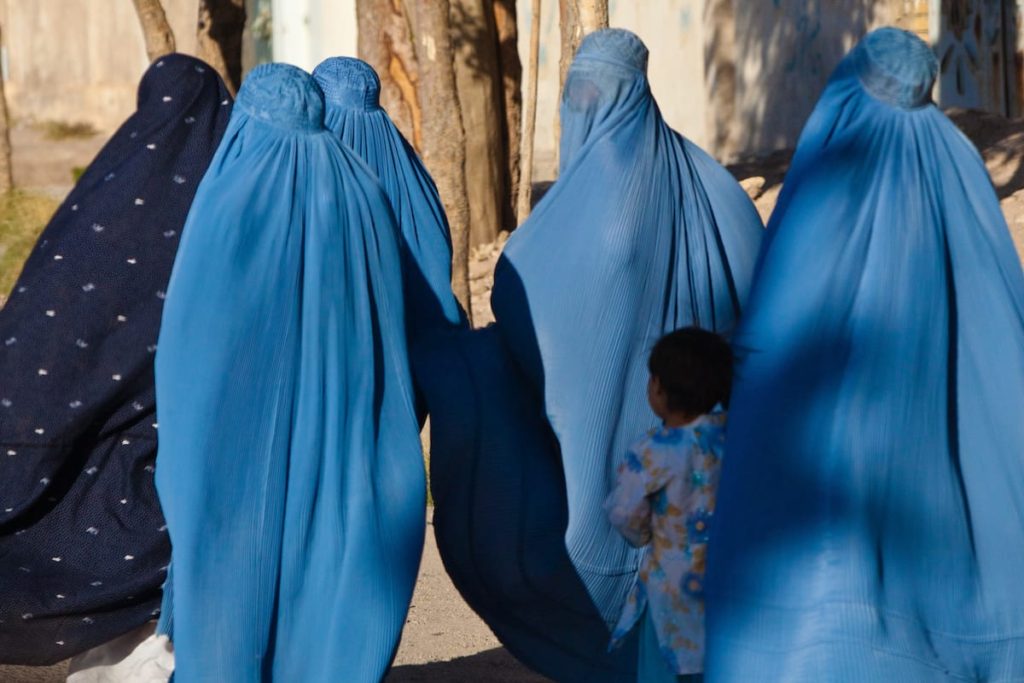Last May, when militants in Afghanistan killed new mothers and their babies in a Kabul maternity hospital, the world’s women shuddered. Afghan women mourned, wept, and worried. Women in Afghanistan have borne the brunt of that country’s brutality in ways few people can imagine. Now worries about what comes next in the face of an incomplete, drawn out peace agreement loom large for the females who live there.
The U.S. and the notorious Taliban signed a preliminary peace agreement in February that aimed at ending two decades of war, but things have not gone smoothly. Insurgent activity added to problems related to power-sharing between the Afghan government and the Taliban, with the Taliban demanding release of thousands of prisoners as part of the deal.
For women fears of what might happen emanate from memories of what life was like during the Taliban rule, when art, culture, education and women suffered from horrific repression. Now the Taliban is asserting again that girls’ education must end at 6th grade, with one leader stating, according to The New York Times, that “until an Islamic system is established our jihad will continue till doomsday.”
It wasn’t always like this in Afghanistan. In the 1920s things looked hopeful for women there. The king and his wife worked hard to improve women’s lives, advocating against the veil and for greater freedom for females. Conservatives pushed back but things were relatively good. In 1964 the constitution gave women the right to vote and to enter politics.
All that came to a halt when the Taliban gained power in 1996, enforcing the brutal oppression of women symbolized by blue burqas and stoning deaths. While some rights for women were achieved after the Taliban defeat in 2001, Afghan women worry now that the peace talks will bargain away many of those rights, which included girls’ education and women’s right to work. Post-Taliban, a 2015 National Action Plan offered soothing rhetorical assurances that went nowhere given the commitment to “maintain cultural and religious codes.”
As Guardian reporter Emma Graham-Harrison wrote last year, “A generation of women have grown up in Afghanistan since the Taliban were toppled. But many of those who have guided the country through profound change … are haunted by memories of their brutal, misogynist rule.” Those groundbreaking women included educators, journalists and politicians, many of whom suffered hideous physical and emotional abuse.
One of the most pressing issues for women leaders in Afghanistan now is that women will not have a legitimate seat at the tables of decision-making, and that only selective women will be half-heartedly consulted. At a conference attended by 700 women in Kabul last year representing 34 provinces, fears were expressed about the Taliban being brought back into government, renewing the oppression of women and girls. Afghan’s first lady Rula Ghani urged the women to express their views publicly, but her husband’s speech didn’t address the issue of women’s rights under a new government.
According to a report in Pass Blue, a blog offering independent coverage of the United Nations, “the participation of Afghan women without methodical, sustained and substantive engagement in a peace settlement has the potential to harm them, not help them.” As one Afghan woman put it, “we’ve seen firsthand how well-intentioned efforts sometimes promote progress for Afghan women while quietly failing them.”
For example, a multi-year U.S.-funded program to teach computer programming to women in Afghan villages ended without funds and no real opportunities having been provided, confirming for village men that educating women was useless.
Intra-Afghan peace talks a year ago included women and received accolades from international media, but Afghan women were not impressed. “It was mere tokenism,” a woman who participated said. “Women on the delegation were called two days beforehand, leaving women to appear unorganized and unprepared.”
As Afghan journalist Mariam Atahi told Pass Blue, “There have been lots of conferences across Afghanistan to see what women wanted in rural and urban areas … Women have worked to form the narrative on women’s right, including efforts to change the interpretation of Islamic law implemented by the Taliban in rural areas they control, but these activists were sidelined from the peace negotiations.”
Najia Nasim, executive director of Women for Afghan Women, the largest women’s rights organization in Afghanistan, told me recently that “Afghan women insist on an inclusive intra-Afghan process where we can meaningfully participate to address institutional mechanisms of peace and amplify the diverse voices of women from around the country.” Women’s omission from the peace process, she said, “inhibits our ability to convey our unique experiences, grievances, priorities, and hopes for Afghanistan’s future, and to shape post-conflict institutions and broader society.”
Afghan women need to be assured a seat at the table where they can participate substantively in political discourse, monitor problems and progress, and ensure accountability on behalf of the country’s women. Nothing less than that is acceptable in an environment where the Taliban may well be at the table with them.
